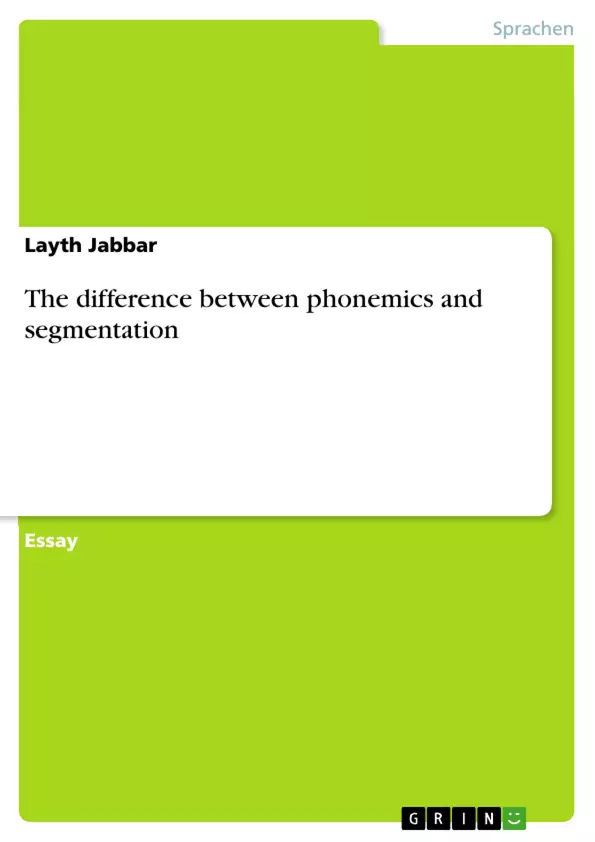This essay is about the difference between phonemics and segmentation.
Generally, if the second language learner wants to be a good speaker he needs to develop his skills in the target language and specific language he tries to spoke it he has to focus on his pronunciation to make his idea clear to the listener. But which way he
must follow to develop this particular point Dose he obligate to study the linguist fields like grammar, pronunciation, vocabularies, and word formation to achieve a certain level in spoken language?
Does he need to read and study phonetics and phonology to be a good narrator, In fact, there is no set answer to these questions but all that we can say he must understand the way that he wants to follow in developing the process of his speaking?
Inhaltsverzeichnis
- The different between phonemics and segmentationThe difference between phonemes and segments.
- Phonemes and segments/ Mutual points
Zielsetzung und Themenschwerpunkte
Dieser Bericht untersucht die Unterschiede zwischen Phonemen und Segmenten im Englischen und beleuchtet die Bedeutung dieser Konzepte für Zweitsprachenlerner. Er beleuchtet die Schwierigkeiten, die Zweitsprachenlerner bei der Unterscheidung zwischen Phonemen und Segmenten haben und wie die Phonetik und Phonologie dazu beitragen können, diese Herausforderungen zu überwinden.
- Die Unterscheidung zwischen Phonemen und Segmenten in der Phonetik und Phonologie
- Die Bedeutung von Phonemen und Segmenten für Zweitsprachenlerner
- Die Schwierigkeiten, die Zweitsprachenlerner beim Verstehen von Phonemen und Segmenten haben
- Die Rolle der Phonetik und Phonologie bei der Bewältigung dieser Schwierigkeiten
Zusammenfassung der Kapitel
The different between phonemics and segmentationThe difference between phonemes and segments.
Dieser Abschnitt untersucht die grundlegenden Konzepte von Phonemen und Segmenten und erklärt, wie sie in der Sprachwissenschaft definiert werden. Es wird erläutert, dass die Phonetik und Phonologie die Grundlage für das Verständnis von Sprache bilden und wie Zweitsprachenlerner von diesen Konzepten profitieren können.
Phonemes and segments/ Mutual points
Dieser Abschnitt befasst sich mit den Gemeinsamkeiten und Unterschieden zwischen Phonemen und Segmenten und stellt fest, dass es oft zu Überlappungen und Verwechslungen kommt. Es werden verschiedene Definitionen von Phonemen und Segmenten vorgestellt und die Probleme bei der Anwendung dieser Konzepte in der Praxis diskutiert.
Schlüsselwörter
Phonetik, Phonologie, Phoneme, Segmente, Zweitsprachenlernen, Aussprache, Sprachwissenschaft, Kontrastive Opposition, Allophone, Minimalpaare, Sprachproduktion, Sprachwahrnehmung, phonetische Analyse, Segmentierung.
- Citar trabajo
- Layth Jabbar (Autor), 2021, The difference between phonemics and segmentation, Múnich, GRIN Verlag, https://www.grin.com/document/1039757



